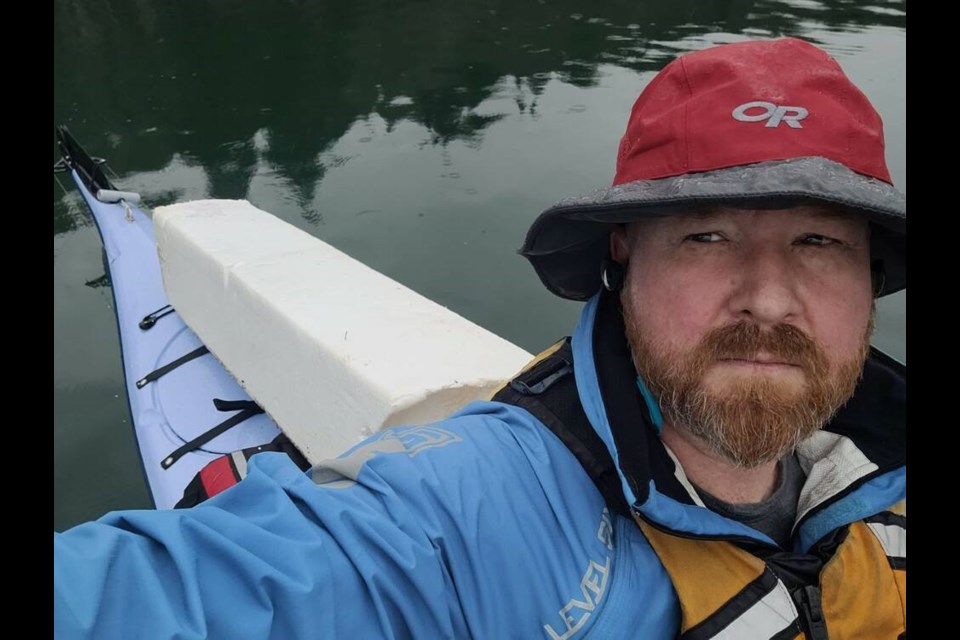A kayaker hoping for a relaxing cruise down Burrard Inlet had his adventure turn sour when he was greeted on the water by floating plastic waste and “hundreds” of pieces of Styrofoam.
Chad Gamache had been kayaking around the Lower Mainland fjord on Sunday afternoon (Feb. 5) when he came across what he believed to be large pieces of a broken oil containment boom – a floating barrier designed to contain an oil spill.
“There was one big block of Styrofoam, and then a bunch of larger chunks,” he said.
“A lot of those chunks had broken up into tiny little pieces that were around a quarter size and a dime size, and they were just floating all over. There were hundreds of pieces in the water.”
Alongside the inner foam pieces were “massive, curtain like” sections of boom between 15 and 30 feet long, he added.
Gamache, a teacher from North Vancouver, said he was “almost certain” the pieces had broken off from a boom located in front of Parkland’s Burnaby Refinery, after he had paddled across the inlet and found more waste near the facility.
But Tara Overholt, a spokeswoman for Parkland and its Burnaby Refinery, said, in this case, “things aren’t what they seem.”
Overholt said the Burnaby Refinery’s containment boom is completely intact, and no sections have gone missing.
“As an inlet partner, we pride ourselves on safety, and we are actively helping an environmental service consultant identify the owner of the boom,” she said.
Debris had floated throughout the fjord, and was bobbing in the waters surrounding the Maplewood Flats bird sanctuary and spread along the shore of the Tsleil-Waututh Nation, said Gamache.
“There was one section sitting in front of the Maplewood bird sanctuary area that was just a big section of curtain-like material, that was the booming, and then another section was over by the Tsleil-Waututh shoreline. That’s where the Styrofoam had broken up and was breaking down into little chunks.”
Gamache, who is a regular on local waters but hadn't kayaked Burrard Inlet in months, said it looked as though the Styrofoam had only been there a few days given it was “relatively fresh looking” and still white in colour.
However, he was concerned for the detrimental effects it could already be having on local wildlife, with much of the waste drifting in a place where birds come to feed.
Gamache had “chased down” some of the larger pieces but was unable to carry out a full cleanup operation due to the wind interfering and the small size of most of the foam pieces, he said.
“The booming material is fine, you can pick that up and take it back, but it’s just the fact that all those little tiny bits of Styrofoam are now going to get washed and blown away,” he said.
“I really didn’t want it to wash up everywhere, and that’s likely what’s happening.”
Gamache noted the oddity of pollution coming from boom equipment that is meant to prevent environmental damage.
“It seems ironic that something that is meant to reduce harm is causing more environmental damage,” he said. “The fact that they have just left it and it has been washing all over the place is really disappointing.”
The Tsleil-Waututh Nation have declined to comment.
Mina Kerr-Lazenby is the North Shore News’ Indigenous and civic affairs reporter. This reporting beat is made possible by the .



